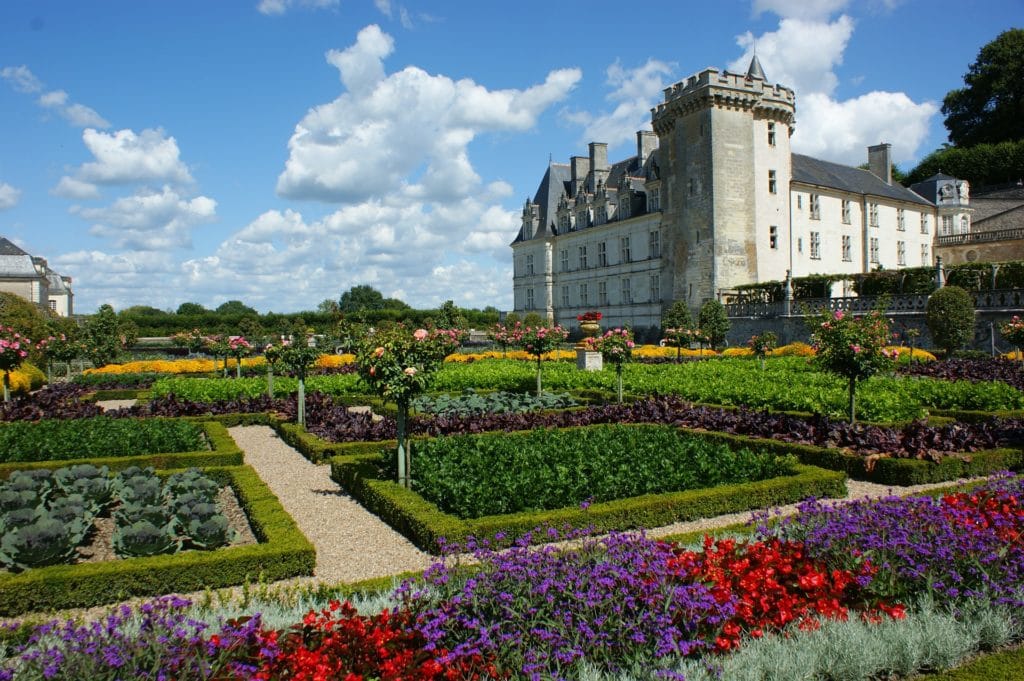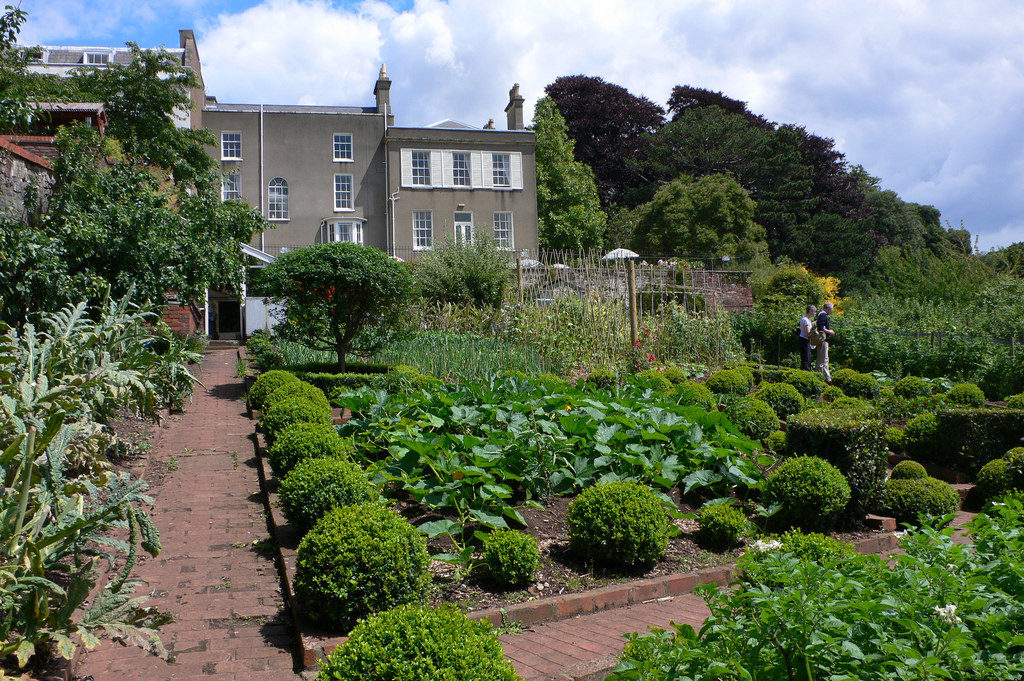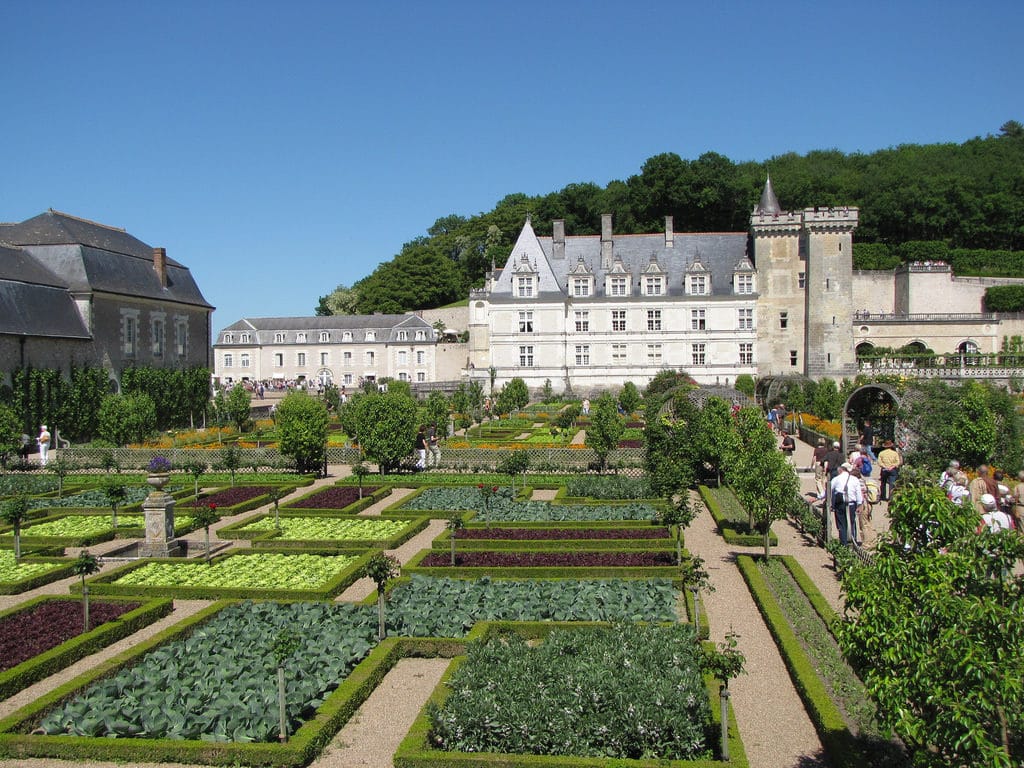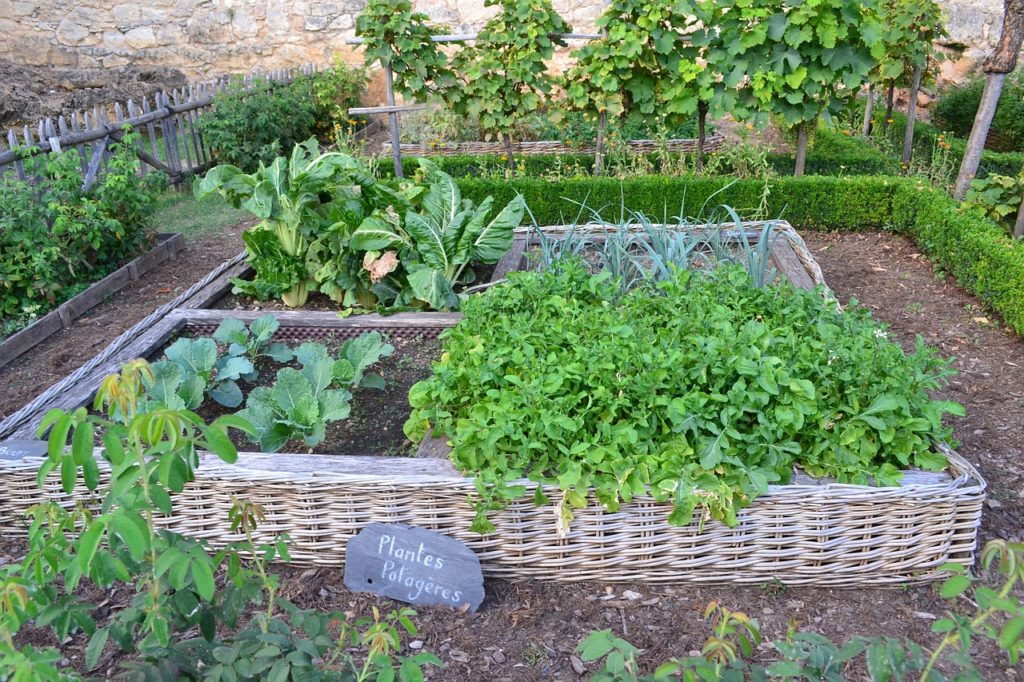A Potager – Your French Kitchen Garden
Votre Potager Francais
In France the kitchen garden, or “potager” is centered on vegetables and herbs and is typically an informal design perfectly in tune with nature. The garden can be a place where local fauna, including insects, birds and reptiles feel at home. Great promoters of biodiversity, kitchen gardeners have saved many heirloom vegetable varieties with their efforts, so by planting your kitchen garden you can be part of a growing and necessary group.

When planning your own potager, consider how the site you choose fits into the rest of the landscape, it’s proximity to your kitchen and your vantage point to get the best view of the garden.
Designing Your Potager

Also, consider the overall design and how you plan to cultivate by hand or machine to determine the width of the paths and shape of the beds. As the seasons change and your plants grow, the width of the paths will evolve, and you won’t see much bare earth between plantings. A good design will include vertical accents as well as lots of colors and shapes. Small fruit trees traditionally stand at the edge of the potager with strawberries, annual herbs or flowers planted at their feet. Aggressive herbs like mint should be planted in containers.
Floral Elements

Complete your potager garden with stunning floral displays. Annuals like poppies, cornflowers and sweet peas add a cottage garden charm, plus their roots don’t take up much soil space. You can also grow edible flowers to make the entire garden productive. Rose petals taste delicious, and chamomile flowers can be used to make tea. Borage is stunning floated in drinks or frozen in ice cubes, and lavender adds subtle flavor to sugar, cocktails, champagne and baked treats like shortbread.
Useful Plants in the Garden

You can also choose flowers that help you out in the garden. Plant calendulas (English marigolds) around your tomatoes to deter aphids. The orange petals have a peppery flavor and can be used as a cheap alternative to saffron in the kitchen. Nasturtiums have edible leaves and petals too, but unlike marigolds they attract aphids, as well as cabbage white butterflies. Plant them near vulnerable vegetables like kale, beans, cabbage and cauliflower, and the pests will eat the nasturtiums instead of your dinner. After harvesting, plant fast growing plants such as chervil and salad greens to fill in any empty spaces.
With some effort, your potager can be as lovely as this small Provençal garden described by novelist Henri Bosco, which “nestled under the terrace, sheltered by high, warm walls but open onto the valley full of brown and blue summits, offered to the rosebushes, the tulips, and even to the stray weeds a well of warm air which smelled all at once of fruit trees, hawthorn, and hyssop. Birds twittered among the plums…Nothing was more charming than this garden. It existed in this tiny sheltered bit of land which had trusted itself to man, under the large benevolent house—just big enough for a soul without worldly ambition or possessing the genius of retirement.”
Photo Credits:
Creative Commons, Villandry-Loire-Garden1 is licensed under CC0 by 1.0
Creative Commons, Vegetable Garden is licensed under CC0 by 1.0
Kitchen Garden, Creative Commons, Kitchen Garden at Emmaus House in Bristol by Heather Cowper is licensed under CC BY 2.0.
Villandry – Le potager, Creative Commons, Villandry – Le potager by sgustin78 is licensed under CC BY-SA 2.0






Leave a Reply